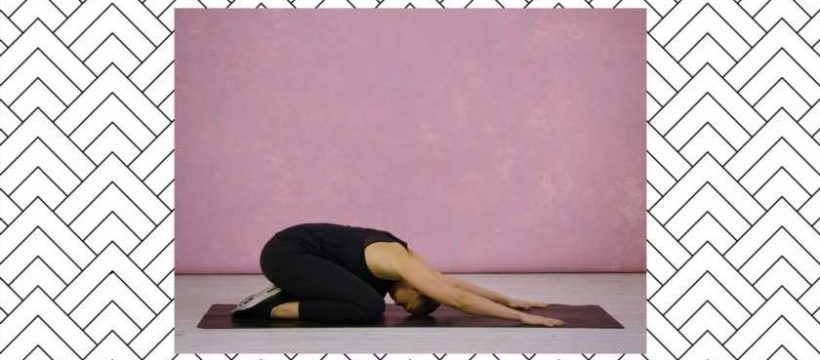Welcome to our weekly Move of the Week series. Every Monday, we’ll be sharing with you one of our favourite exercises – how to do them, what muscles they work and why they should be a regular part of your workout regime. This week: child’s pose.
There comes a point in the day when all you crave is a little peace. You don’t have the time or energy for a walk, your brain is too tangled for meditation and music can’t cut through the noise. In that moment, you need child’s pose.
The yoga favourite is often used during asanas as a reset, but it’s just as powerful when used outside of a set practice. Child’s pose stretches the posterior chain muscles that often tense up in moments of stress or during the day (hunched shoulders, anyone?), while bringing your head down to the floor is known to have a profoundly calming effect on the mind.
You may also like
Move of the week: how to do a high plank (and why they’re better for posture than low planks)
What is a child’s pose?
Child’s pose is a wonderfully relaxing, passive stretch. It’s great because it:
Calms the body: child’s pose stretches muscles that tend to get tense when we’re stressed (like the shoulders, back and hips).
Calms the mind: resting your forehead on the floor stimulates the oculocardiac reflex, which lowers the heart rate and increasing relaxation.
Increases flexibility: many of us are tight in the hips and the wide-legged version of this pose is a great hip-opener.
What muscles are working?
This pose is more of a mental workout than a physical one – it’s a pose you do when you need to reset. Saying that, you might find that the following muscles get a little stretch:
- Trapezius (upper back)
- Erector spinae (run along the spine)
- Latissimus dorsi (muscles that sit between your spin and ribs)
- Teres major (runs from the shoulder blade to your underarms)
- Glutes
- Hip flexors
How to do child’s pose
- Start out on all fours on the floor and then take your knees out as wide as your mat with your big toes touching.
- Sit back so that your bum is resting on your heels (or as far back as they’ll go).
- Stretch your arms forward and lower your chest and forehead to the floor.
- Let your entire body release down into the mat.
- Breathe.
- It doesn’t matter if your bum moves away from your heels slightly or if you’d prefer to bring your arms back by your sides.
For more moves of the week and fitness tips, sign up to the Strong Women Training Club.
Images: Stylist
Source: Read Full Article
